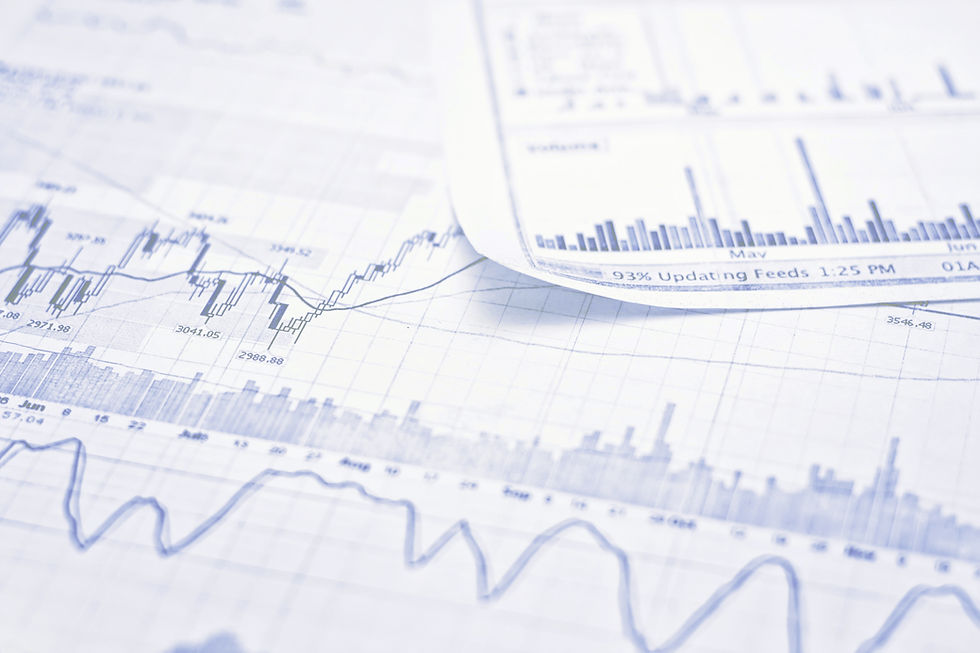QE and Interest Rates
- charris976
- Aug 1, 2017
- 3 min read
Updated: Mar 21

During an interview with a Bloomberg reporter on July 31, 2018, Alan Greenspan, the former Federal Reserve Board Chairman, stated that “By any measure, real long-term interest rates are much too low and therefore unsustainable.” Greenspan went on to express this opinion, “We are experiencing a bubble, not in stock prices but in bond prices. This is not discounted in the marketplace.”
We have stated our belief that interest rates have bottomed and that over the next several years interest rates will begin to move up and prices for bonds will go lower. There are many factors which influence interest rates – we are going to focus on just one of those in this article – Quantitative Easing or as it is commonly known – QE.
QE is the use of credit by the Federal Reserve Bank to buy bonds – U.S. Treasury issued bonds and Mortgage Backed Security (MBS) bonds. The Federal Reserve uses credit to buy bonds – this is sometimes referred to as “printing money” - either on the open market or in transactions with banks. The Federal Reserve objectives are to lower longer term interest rates by shrinking the supply of bonds and increasing demand by inserting a persistent new buyer into the mix of bond buyers and to inject money into the economic system through its purchase of bonds. Combining QE with the lowering of short term borrowing costs to zero has allowed the Federal Reserve to artificially lower interest rates for both short and long- term borrowers in hopes of stimulating economic growth.
One can argue that in many ways the Federal Reserve’s dual action of lowering short term rates and QE have led to a very healthy unemployment rate and an improving economy. However, the question now confronting us is what happens when the Federal Reserve finishes unwinding QE and continues to increase short term rates.
The Federal Reserve ended the buying of debt on credit, or printed money, at the end of 2014. Using the 10-year US Treasury Note as the barometer for longer term interest rates, the low point in yield was in July of 2016 just below 1.40%. The current yield on the US 10 year is at 2.27%. Were we to extrapolate that slope, the US 10-year yield would be around 3.15% in the summer of 2018.
However, the final unwinding of QE is just set to begin, assuming nothing changes the Federal Reserve Board’s stated guidance, in the fourth quarter of this year. Rather than using the interest from its bond portfolio to reinvest in more bond buying, the Federal Reserve will begin to let its bond holdings mature and roll off the books. When the Federal Reserve quit buying debt with credit, they had accumulated a bond portfolio that was over $4 Trillion in value, it now stands somewhere around $4.5 Trillion in value. That is the number 4 followed by 13 zeroes. The Federal Reserve owns over 12.5% of the total US debt and somewhere around 13.5% of all mortgage backed debt. To put that in some perspective, China owns approximately 5% of US debt and they have been a seller of some of their US debt holdings over the past year. To sop up the US Treasury debt currently held by the Federal Reserve we will need to find one or two more “China’s” to buy the debt.
We believe as the Federal Reserve begins to unwind its debt holdings, we will see some reversal of the process that they engineered when they began their various QE programs (three in total). That is, supply of bonds will increase, demand may shrink as a persistent buyer, the Federal Reserve, exists the party and money supply will shrink.
As we stated at the beginning of this article, there are many factors that will influence the direction of interest rates. The final unwinding of QE and further increases in short term lending rates by the Federal Reserve will certainly tilt the direction to an increase in rates. But, the reality is no one knows for certain how quickly and for how long rates will rise. The fact of the matter is that such an extensive QE program combined with historically low short- term lending rates by the Federal Reserve has not been done in modern history. How the unwinding of the artificially low rates will proceed and whether there truly is a bubble in bond prices will only be known for sure as we march through time.
As for us, we will continue to be cautious in our fixed income holdings, holding some of our money designated for bonds in the money market as we continue to observe the effects of the final QE unwinding. We anticipate higher yields and better prices over the next 6 – 12 months.
As always, thank you for the opportunity to work with you. We hope you are having a wonderful summer season!

Comments